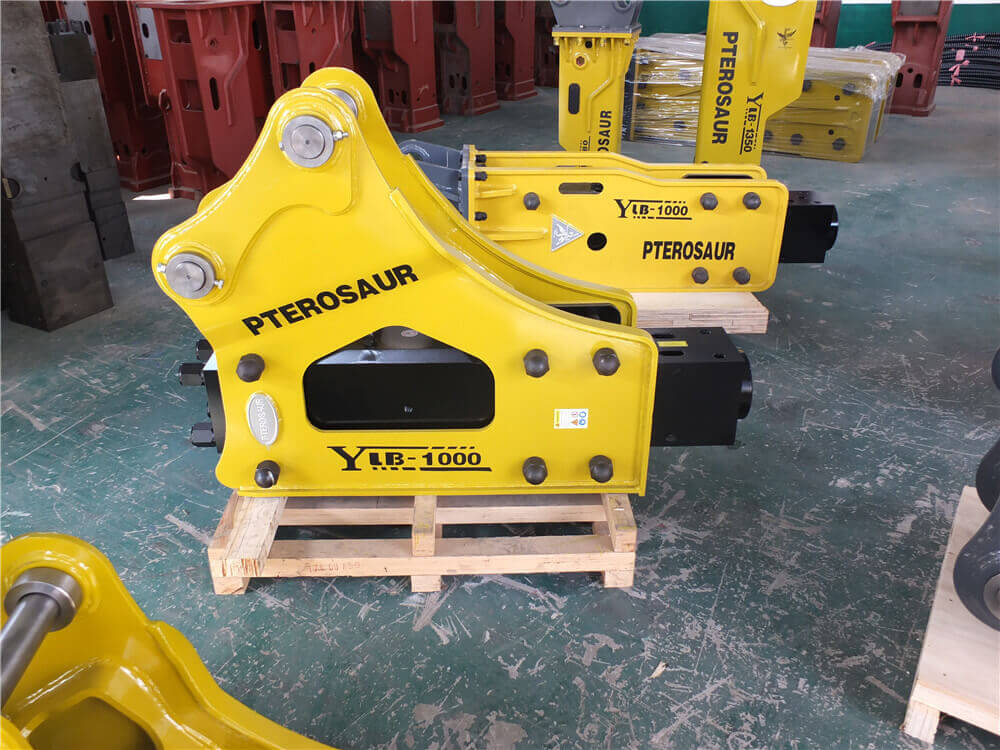Understanding Nitrogen Charging for Hydraulic Breakers
Hydraulic breakers are essential tools in construction and demolition, providing powerful impact force to break up concrete, rock, and other materials. One critical aspect of maintaining the performance and efficiency of these hydraulic breakers is the nitrogen charging process. This article will explore why nitrogen charging is vital, how to charge a hydraulic breaker with nitrogen, and the consequences of insufficient nitrogen levels.
Why Hydraulic Breakers Need Nitrogen
The primary component that utilizes nitrogen in hydraulic breakers is the accumulator. The accumulator is a device that stores energy and plays a crucial role in the operation of the breaker. It is filled with nitrogen, which helps to absorb the energy from the hydraulic system during operation and release it effectively when needed. This process ensures that the hydraulic breaker can deliver consistent and powerful blows.
Benefits of Nitrogen Charging
- Energy Storage: Nitrogen allows the accumulator to store energy from the hydraulic breaker’s previous blow, which can be released during the next operation.
- Performance Maintenance: Consistent nitrogen levels help maintain the breaker’s performance, ensuring it operates at optimal efficiency.
- Protection Against Damage: Adequate nitrogen pressure can help protect internal components from wear and tear, prolonging the lifespan of the hydraulic breaker.
How to Charge Nitrogen in Hydraulic Breakers
Charging a hydraulic breaker with nitrogen is a straightforward process but must be done carefully to ensure safety and effectiveness. Here are the steps typically involved:
-
Gather Necessary Equipment: Before starting, you’ll need a nitrogen charging kit, which includes a nitrogen bottle, pressure gauges, and hoses specific for hydraulic hammer use (e.g., the N2 Nitrogen Charging Kit).
-
Prepare the Hydraulic Breaker: Fully extend the tool while ensuring that the retaining pin is installed. This step is crucial for safely charging the system.
-
Attach the Charging Kit: Connect the nitrogen charging kit to the accumulator. Make sure the connections are secure to prevent leaks.
-
Charge with Nitrogen: Open the nitrogen bottle and carefully charge the accumulator. Monitor the pressure using the gauges on the charging kit to reach the manufacturer’s recommended nitrogen pressure.
-
Check for Leaks: After charging, inspect all connections for signs of leaks. It’s vital to ensure the integrity of the system.
-
Finalize the Process: Once the nitrogen charge is complete, disconnect the charging kit and check the operational status of the hydraulic breaker.
How Much Nitrogen Should Be Added?
The amount of nitrogen to be added to a hydraulic breaker depends on the specific model and manufacturer guidelines. Generally, operators should refer to the breaker’s manual to determine the optimal nitrogen pressure.
What Happens If There Is a Shortage of Nitrogen?
Insufficient nitrogen in the accumulator can lead to several issues:
– Reduced Efficiency: The hydraulic breaker may not deliver the expected impact force, leading to decreased productivity.
– Increased Wear: Lack of proper nitrogen pressure can cause excessive wear on internal components, leading to costly repairs and downtime.
– Operational Failure: In extreme cases, a hydraulic breaker may become inoperable if nitrogen levels are critically low.
Conclusion
Maintaining proper nitrogen levels in hydraulic breakers is crucial for their performance and longevity. Understanding the charging process, the importance of the accumulator, and the consequences of nitrogen shortage can help operators ensure their equipment operates efficiently. Investing in a quality nitrogen charging kit, such as the N2 Nitrogen Charging Kit, can facilitate this maintenance process and contribute to the overall effectiveness of hydraulic breaking operations.



































